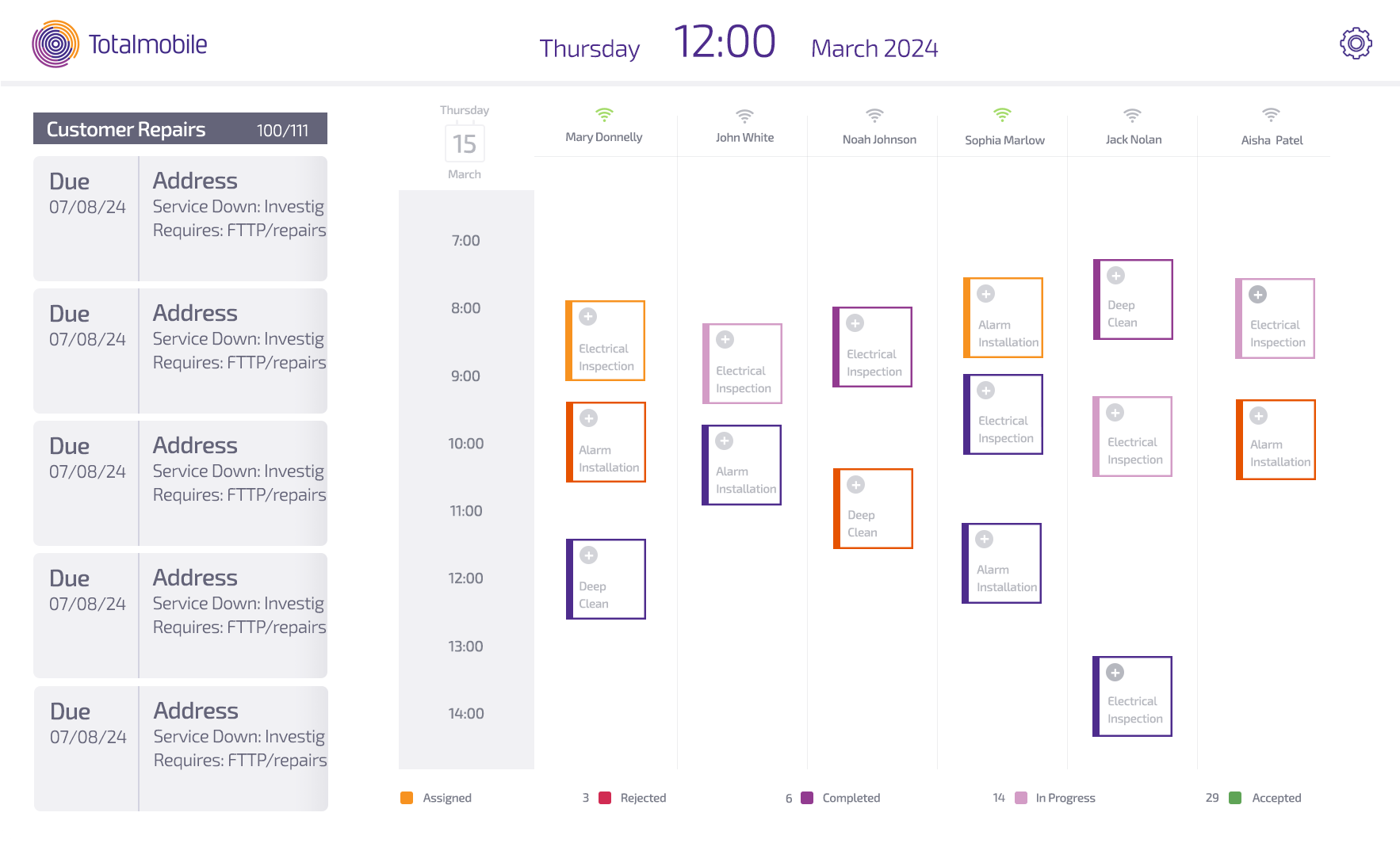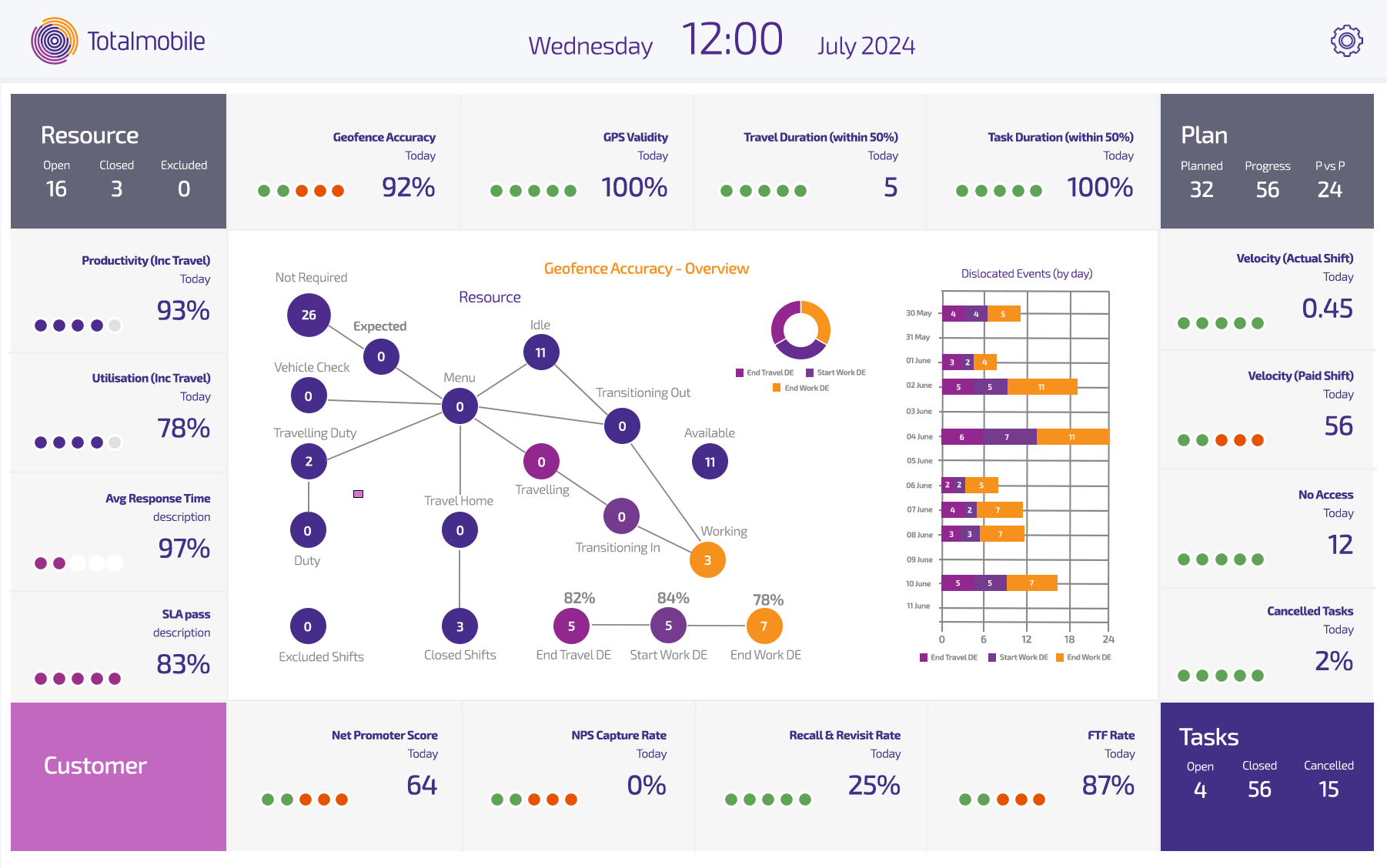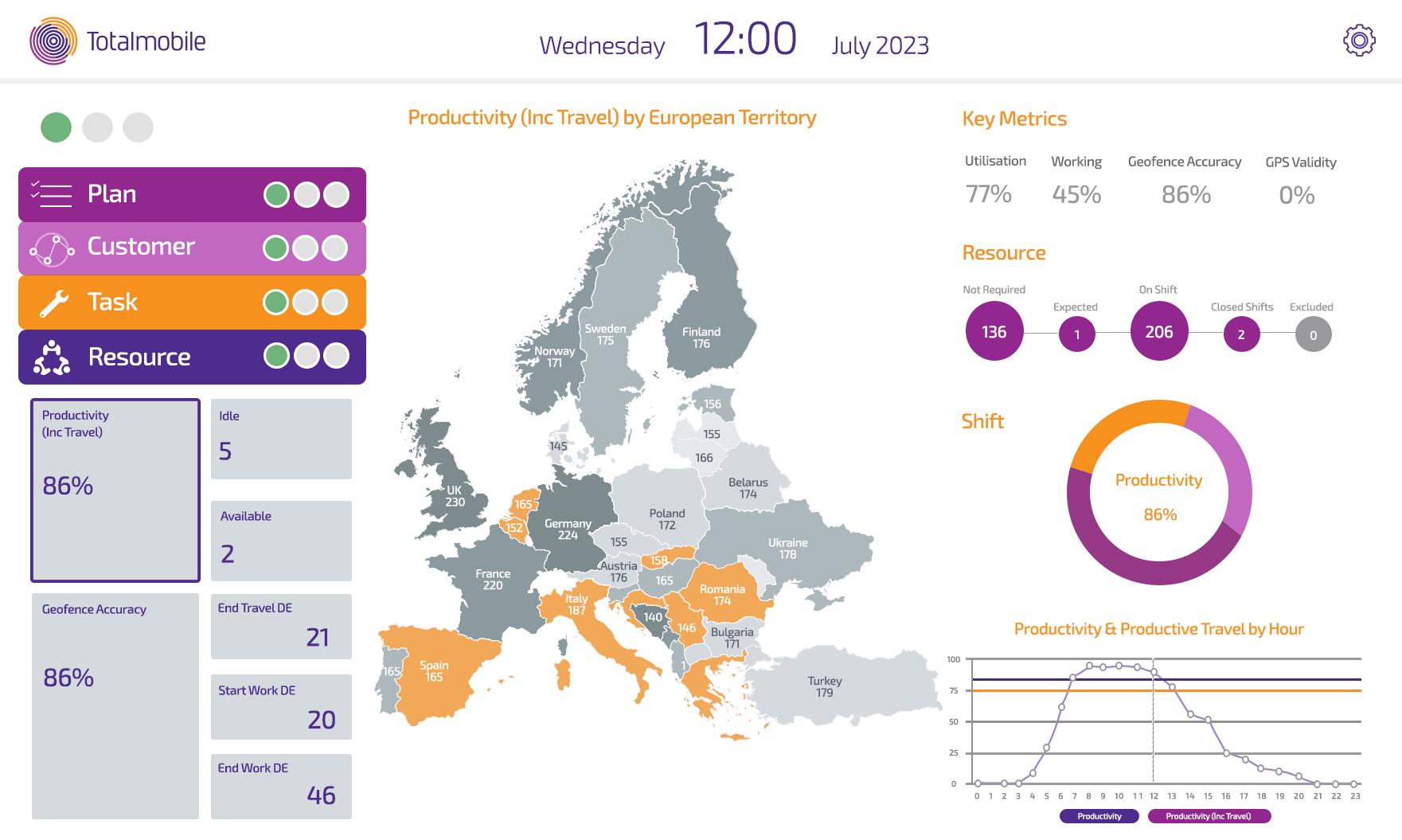Field service management (FSM) refers to the coordination and optimisation of field resources, including employees and equipment, deployed outside company premises or in the field. FSM coordinates service operations such as installations, maintenance and repairs, customer support, education, and inspections.

What is Field Service Management (Software)?
Field service management aligns off-site workers and organises the resources they need to complete their jobs efficiently and on time. FSM activities include scheduling, dispatching, invoicing, and real-time tracking of field workers who provide services and repairs in various industries.
FSM software centralises these processes, making field operations more efficient and customer-centric. Organisations gain a springboard for a seamless service experience from first contact to final invoicing. All-in-one field service management software can boost productivity, enhance customer satisfaction, and drive success across your entire operation. Who wouldn’t want that?
Why is Field service Management Important?
The pressure is on to deliver exceptional service experiences, and field Service Management software is an important tool for service providers. It helps organisations exceed customer expectations and drive business growth in today’s competitive marketplace. Many FSM capabilities fall under the umbrella of field service management software. These field service management features make it a must-have for organisations managing large, field-based workforces.
What Are The Benefits of Field Service Management?
Deploying a field service management system, with its many features, offers a wide range of long-term and immediate benefits, including:
Common field service challenges, like showing up unprepared or using ineffective communication methods, can impact your company’s productivity and effectiveness. FSM software helps avoid these pitfalls and supports your team in the field, ensuring they operate at their best. By harnessing the power of data analytics and performance metrics, Totalmobile helps organisations identify areas for improvement, optimise resource allocation, and continually refine their service delivery strategies to better serve their customers.
How Totalmobile’s Field Service Management Solution Can Help

Connecting Your Mobile Teams
Maximise your mobile worker’s time on site. A mobile app provides access to live service requests, job details, task histories, timesheets, and past images and attachments. With an easy check-in functionality, field staff can add and update job notes offline in remote areas.
Remote data capture lets your teams collect data in the field, upload attachments, and capture photos. This keeps all stakeholders informed and connected and continuously improves owned-data quality.
Streamline Work Orders
From work order creation and assignment to job execution and reporting, field service management software streamlines the work order lifecycle. By centralising and automating work order activities, field service software provides everything you need to manage this process end-to-end. Every field tech can access project histories and task-specific details upon assignment using their mobile devices. This platform reduces errors, elevating the customer experience and minimises SLA breaches.


Schedule Your Remote Workforce Effectively
Cloud-based service management software simplifies scheduling by skill-matching technicians to assignments based on their abilities, location, and availability. With digitised job information, you can streamline service and quickly respond to flexible service demand without manual intervention.
Easily Invoice and Quote Remotely
Automatic triggers based on your organisation’s requirements can generate invoices throughout the service lifecycle. FSM systems automate the billing process to ensure a consistent cash flow and no missing invoices. Whether it’s:
- Progress billing
- Fixed-price billing
- Time and material-based billing
- Billing based on project completion
Effective billing and costing throughout ongoing projects across multiple fiscal periods streamlines the invoicing and quoting processes. Additionally, staff can present quotes and invoices, take payment, and work efficiently with the office through two-way sync and real-time updates.


Remotely Access Resources & Capture Data Anywhere
With centralised digital documentation, every detail of your service is readily available to your team, promoting collaboration and service continuity. By improving access to information, a field service management system helps improve customer service and reduces errors associated with manual data entry.
Paperless Field Service Management
Eliminate paperwork and digitise your forms with our easy-to-use form builder and mobile form-filling software. Say goodbye to time-consuming manual data entry. Say hello to streamlined, automated processes. Going paperless helps to reduce the time and cost associated with administrative tasks, such as manual data entry, filing, and storage. This frees up valuable time for your service team. The extra time allows them to focus on their core job duties and face-to-face customer service. This ultimately improves customer satisfaction and retention.
Digital records are more secure and less prone to damage or loss.
This protects your most important data and maintains compliance with regulatory requirements when auditing is required.


Easily Manage Third Parties
Field management software can oversee projects that involve external contractors from start to finish. Quickly generate a requisition order or tender directly within the system, which includes pricing agreements and pre-planned budgeting.
Project updates and work orders can be centrally managed and tracked with secure portal access. Once the job is completed and approved, service tools can automatically generate receipts for the amount owed to the subcontractor. This reduces administrative costs, automated billing and invoicing, and helps maintain strong relationships with subcontractors.
Unleash True Operational Intelligence
Gain a deeper understanding of your business operations. Operational intelligence lets you make data-driven decisions that optimise your operations and identify new revenue opportunities. With real-time insights, you can proactively address threats with predictive intelligence. This allows you to allocate resources more effectively and improve customer satisfaction. Additionally, OI can help you stay ahead of competitors by identifying trends and market opportunities in your industry.


Shift Planning Like a Pro
Empower your team to manage staff at every level better, whether full-time employees, banking / adaptive staff or from a 3rd party workforce provider -all through one, single rostering solution. By managing staff skills, availability and absences more effectively, you deploy rosters that maximise the potential of your available workforce. Better shift pattern design ensures service demand is met and, above all, it’s compliant.
Your Workforce, Protected
Ensuring the safety of your remote workforce is a top priority. You can mitigate risks and protect your staff by implementing direct-to-device well-being check-ins throughout the working day. This increases operational compliance and avoids potential penalties and risks. By enhancing your duty of care as an employer, you can safeguard staff and give them the confidence to focus on delivering exceptional service, which improves service continuity. With the right measures in place, you can protect your team and promote a safe and productive working environment.

FSM Software FAQs
What is field service?
Field service refers to any work performed or services delivered on your products at a customer’s site rather than your own company premises – or ‘in the field’.
What is field service management?
Field Service Management (FSM) is the process of coordinating a company’s resources, including staff and equipment, to streamline tasks and contracts conducted outside the company premises. It optimises operations in the field, covering services like installations, maintenance and repairs, customer support, sales and inspections.
What does field service do?
Field service refers to any service performed in the field rather than at a company’s premises. This often involves dispatching technicians or service professionals to specific locations for installation, maintenance, or repair tasks. Field service management software organises these processes to improve efficiency and customer satisfaction.
What is an example of field service management?
An example of field service management can be seen in the telecommunications industry. When a customer reports an issue, field service management software is used to schedule and dispatch a technician to the customer’s location. The progress is tracked in real-time, and follow-up tasks are managed within the same system, making the service delivery process more streamlined and efficient.
What are the objectives of a field service manager?
The objectives of a field service manager typically include efficient scheduling and dispatching of service technicians, improving customer satisfaction, reducing operational costs, and increasing service revenue. Utilising field service management software is crucial to achieving these objectives as it helps streamline processes and monitor key performance indicators.
Why is field service important?
Field service is vital because it directly impacts customer satisfaction. Efficient field service resolves customer issues quickly, improves the customer experience, and fosters customer loyalty. Field service management aids in this by optimising service delivery and tracking performance metrics.
What is field service CRM?
A field service CRM (Customer Relationship Management) is a tool used in field service management to improve customer relationships. It helps track customer interactions, schedule services, and analyse customer data to enhance service quality. It is essential to any effective FSM strategy to improve control and visibility over upcoming required work and ensure the right people are available at the right time.






